Abstract
A rapid slide agglutination test has been developed for the identification of Neisseria gonorrhoeae that are primarily detected as oxidase-positive colonies in gonococcal cultures. The technique is based on the specific nonimmune reactivity between the Fc portion of immunoglobulin (Ig)G and staphylococcal protein A. IgG molecules adsorbed to stabilized staphylococci will thereby become oriented with their antigen-reactive sites that are directed outwards. Protein A-containing staphylococci with unabsorbed anti-gonococcal antibodies gave positive co-agglutination reactions with gonococci but also with meningococci, some Moraxella, Haemophilus, and Pseudomonas strains. These crossreactions were eliminated by absorption of the anti-gonococcal antiserum with meningococcal and Moraxella organisms prior to the coating of reagent staphylococci. In the routine culture diagnosis of N. gonorrhoeae the use of specific gonococcal reagent staphylococci gave concordant results with fermentation procedures and immunofluorescent techniques.
Full text
PDF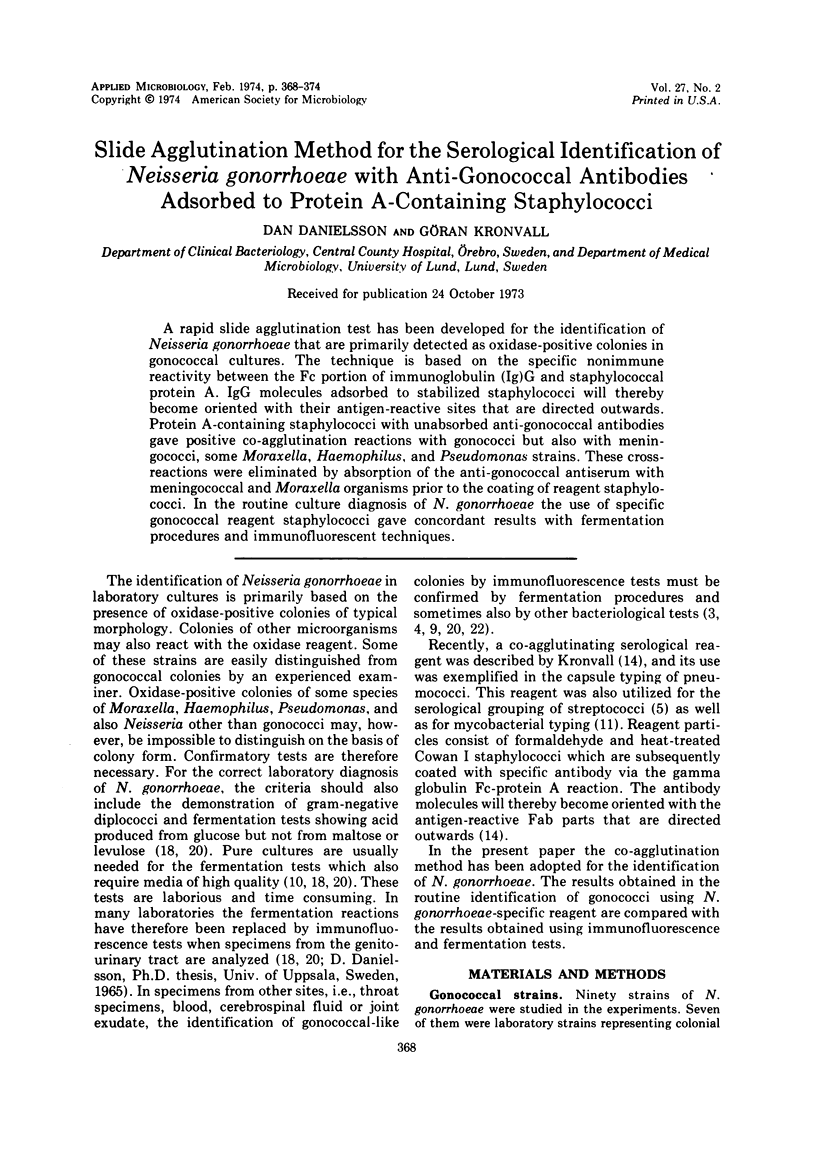
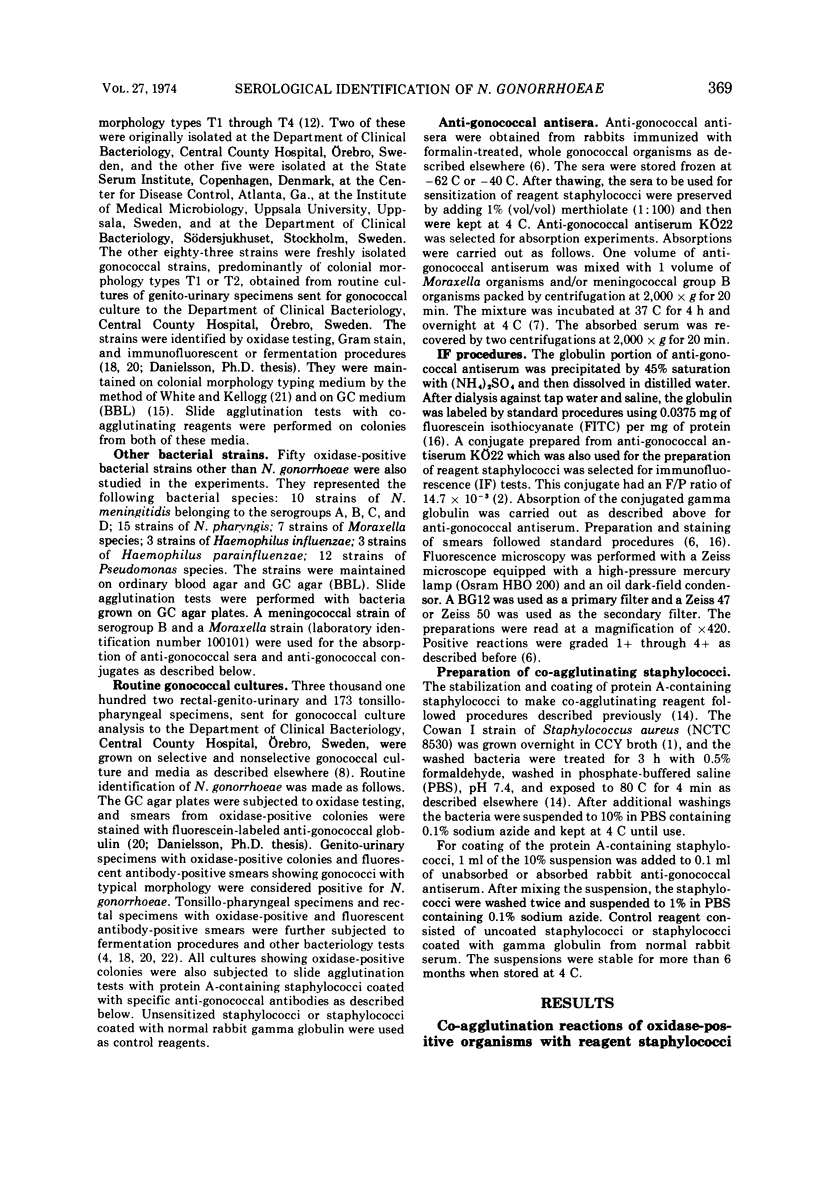
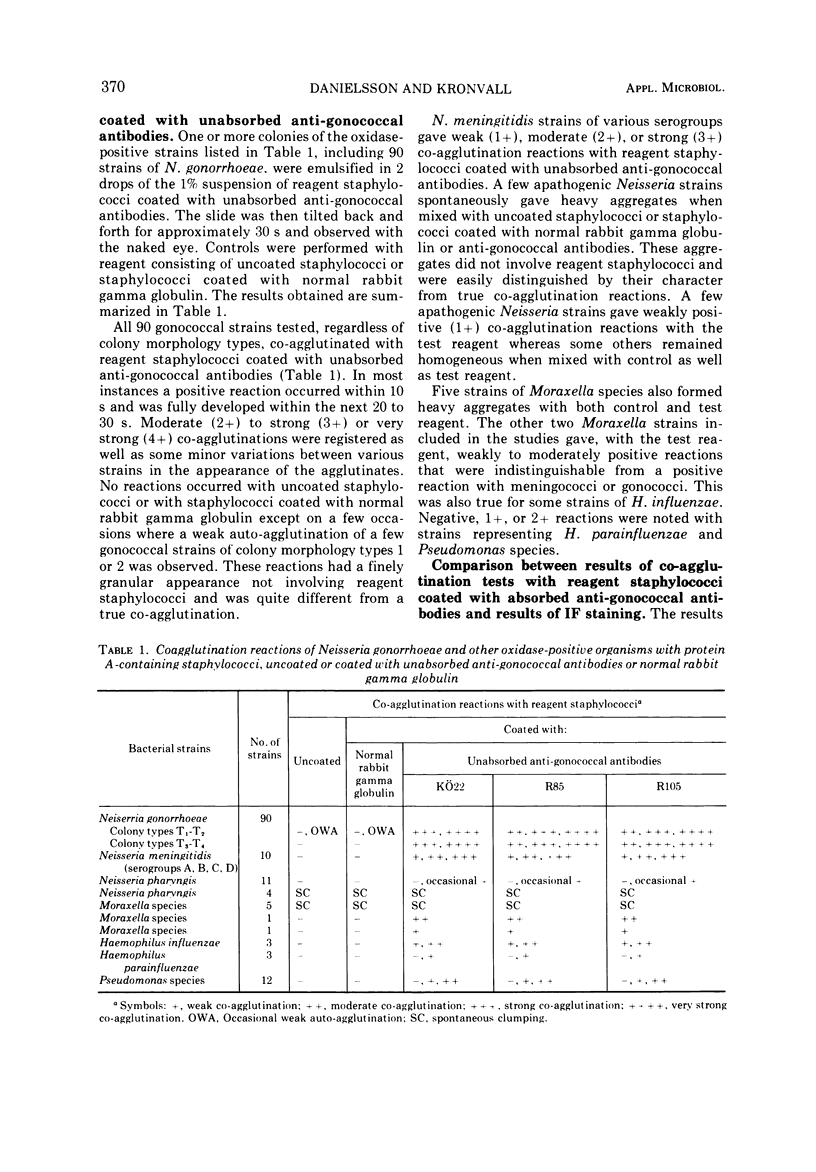
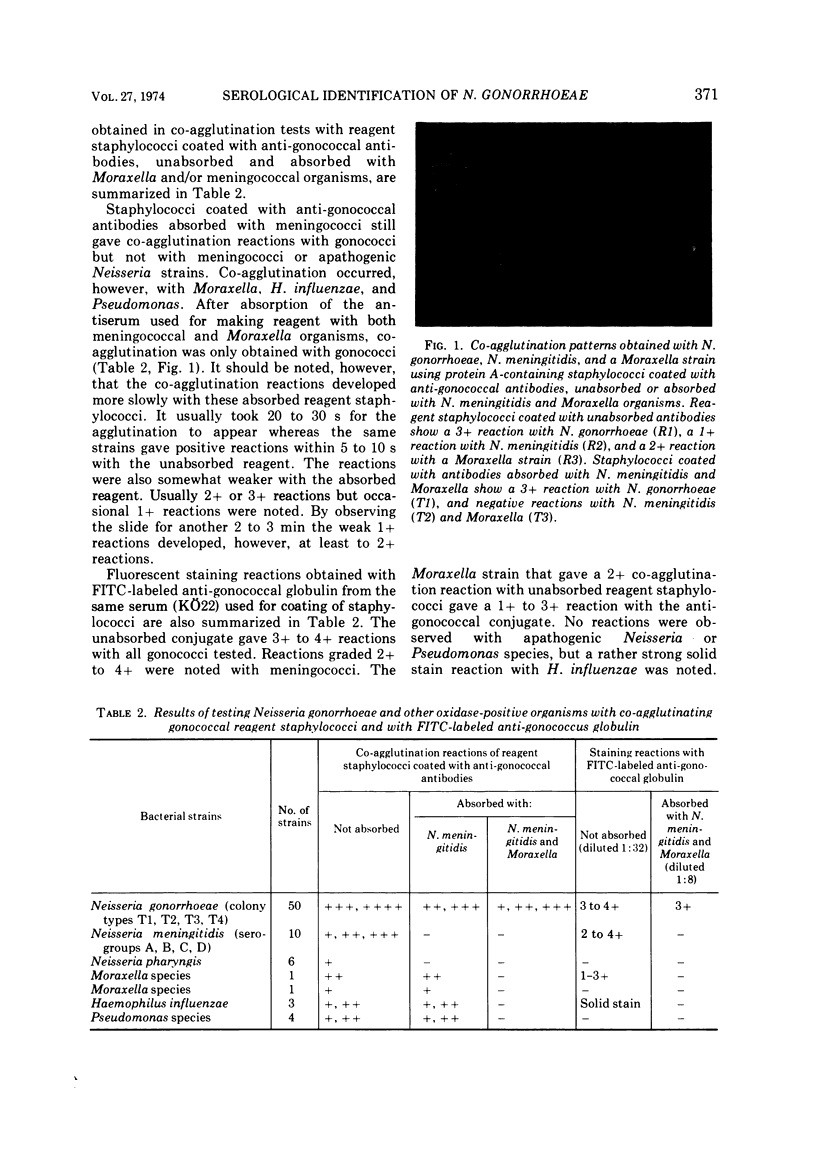
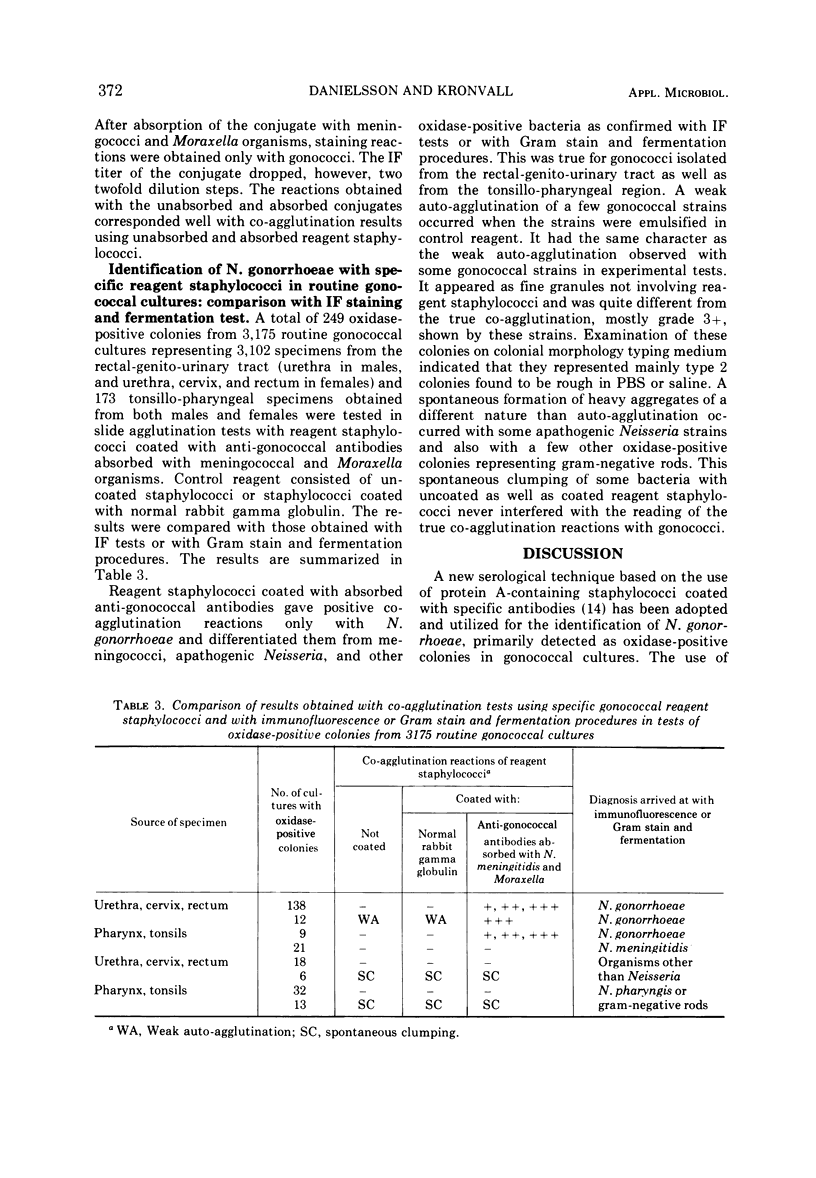
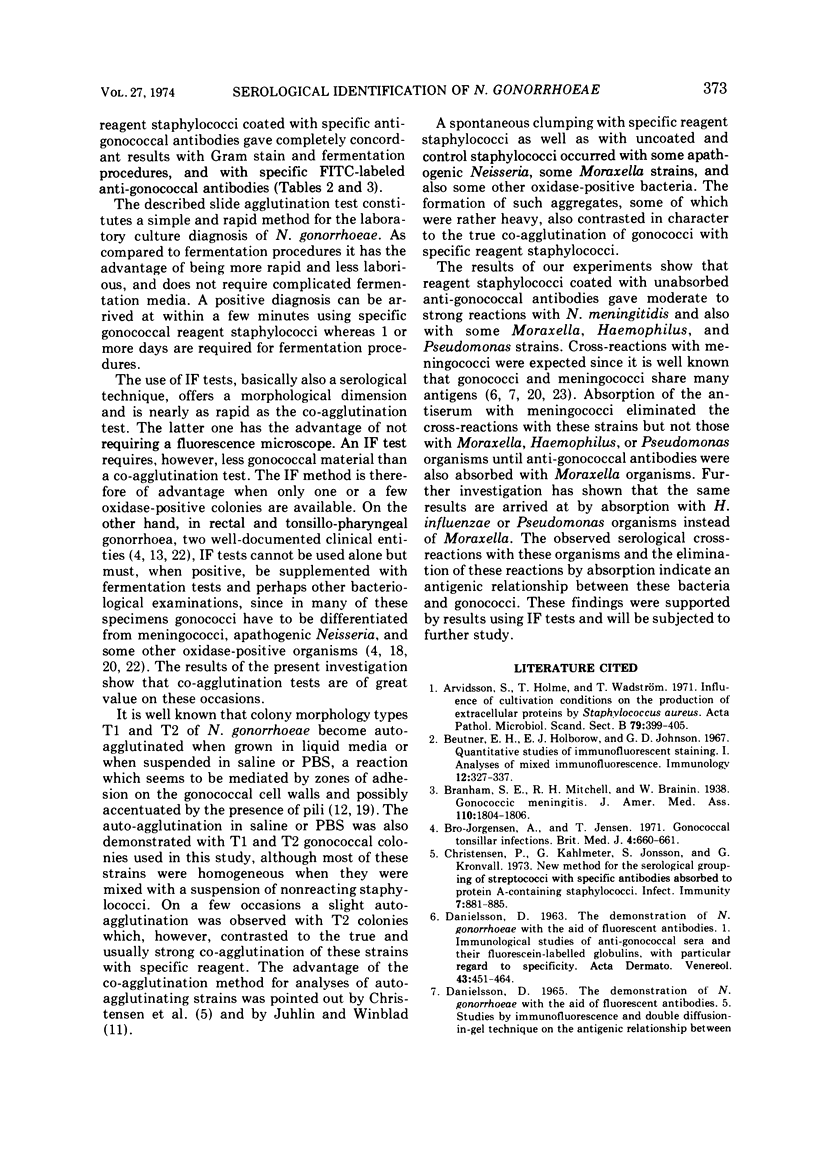
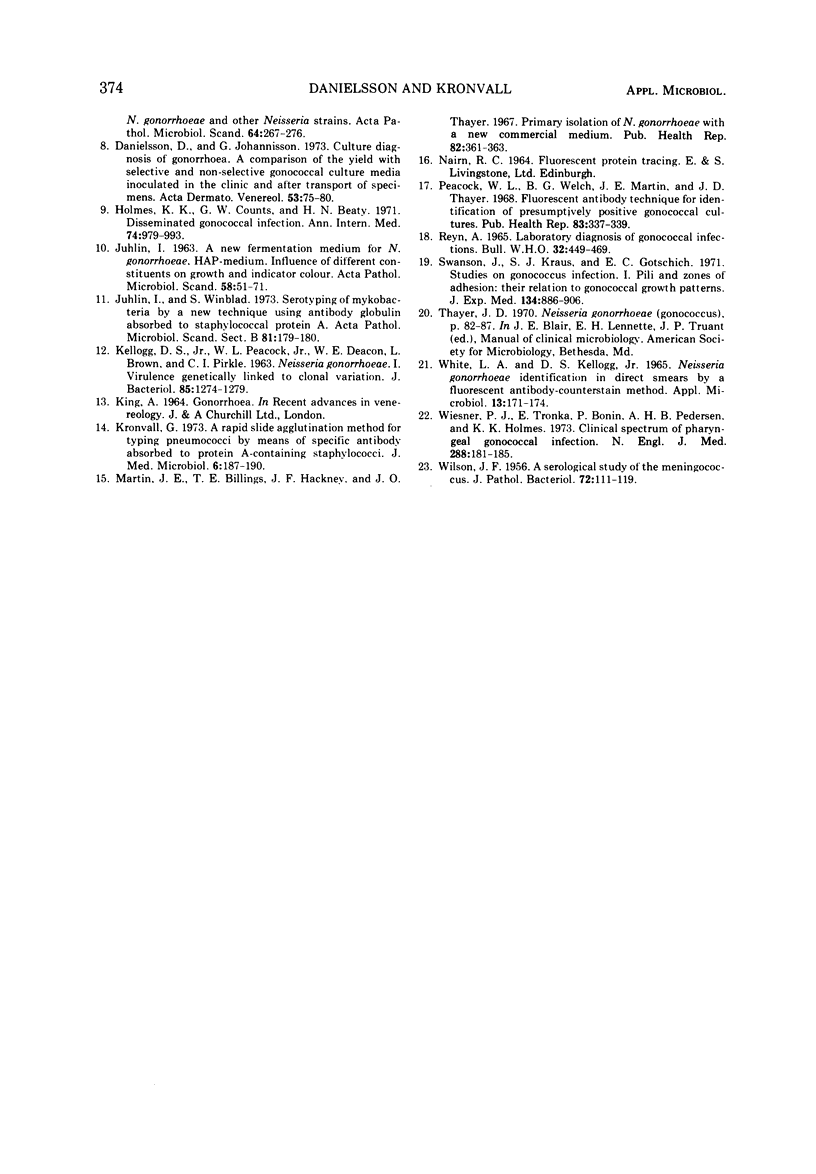
Images in this article
Selected References
These references are in PubMed. This may not be the complete list of references from this article.
- Arvidson S., Holme T., Wadström T. Influence of cultivation conditions on the production of extracellular proteins by Staphylococcus aureus. Acta Pathol Microbiol Scand B Microbiol Immunol. 1971;79(3):399–405. doi: 10.1111/j.1699-0463.1971.tb00079.x. [DOI] [PubMed] [Google Scholar]
- Beutner E. H., Holborow E. J., Johnson G. D. Quantitative studies of immunofluorescent staining. I. Analyses of mixed immunofluorescence. Immunology. 1967 Mar;12(3):327–337. [PMC free article] [PubMed] [Google Scholar]
- Bro-Jorgensen A., Jensen T. Gonococcal tonsillar infections. Br Med J. 1971 Dec 11;4(5788):660–661. doi: 10.1136/bmj.4.5788.660. [DOI] [PMC free article] [PubMed] [Google Scholar]
- Christensen P., Kahlmeter G., Jonsson S., Kronvall G. New method for the serological grouping of Streptococci with specific antibodies adsorbed to protein A-containing staphylococci. Infect Immun. 1973 Jun;7(6):881–885. doi: 10.1128/iai.7.6.881-885.1973. [DOI] [PMC free article] [PubMed] [Google Scholar]
- DANIELSSON D. THE DEMONSTRATION OF N. GONORRHOEAE WITH THE AID OF FLUORESCENT ANTIBODIES. 1. IMMUNOLOGICAL STUDIES OF ANTIGONOCOCCAL SERA AND THEIR FLUORESCEIN-LABELLED GLOBULINS, WITH PARTICULAR REGARD TO SPECIFICITY. Acta Derm Venereol. 1963;43:451–464. [PubMed] [Google Scholar]
- Danielsson D., Johannisson G. Culture diagnosis of gonorrhoea. A comparison of the yield with selective and non-selective gonococcal culture media inoculated in the clinic and after transport of specimens. Acta Derm Venereol. 1973;53(1):75–80. [PubMed] [Google Scholar]
- Holmes K. K., Counts G. W., Beaty H. N. Disseminated gonococcal infection. Ann Intern Med. 1971 Jun;74(6):979–993. doi: 10.7326/0003-4819-74-6-979. [DOI] [PubMed] [Google Scholar]
- Juhlin I., Winblad S. Sero-typing of mycobacteria by a new technique using antibody globulin adsorbed to staphylococcal protein A. Acta Pathol Microbiol Scand B Microbiol Immunol. 1973 Feb;81(1):179–180. doi: 10.1111/j.1699-0463.1973.tb02203.x. [DOI] [PubMed] [Google Scholar]
- KELLOGG D. S., Jr, PEACOCK W. L., Jr, DEACON W. E., BROWN L., PIRKLE D. I. NEISSERIA GONORRHOEAE. I. VIRULENCE GENETICALLY LINKED TO CLONAL VARIATION. J Bacteriol. 1963 Jun;85:1274–1279. doi: 10.1128/jb.85.6.1274-1279.1963. [DOI] [PMC free article] [PubMed] [Google Scholar]
- Kronvall G. A rapid slide-agglutination method for typing pneumococci by means of specific antibody adsorbed to protein A-containing staphylococci. J Med Microbiol. 1973 May;6(2):187–190. doi: 10.1099/00222615-6-2-187. [DOI] [PubMed] [Google Scholar]
- Martin J. E., Jr, Billings T. E., Hackney J. F., Thayer J. D. Primary isolation of N. gonorrhoeae with a new commercial medium. Public Health Rep. 1967 Apr;82(4):361–363. [PMC free article] [PubMed] [Google Scholar]
- Peacock W. L., Jr, Welch B. G., Martin J. E., Jr, Thayer J. D. Fluroescent antibody technique for identification of presumptively positive gonococcal cultures. Public Health Rep. 1968 Apr;83(4):337–339. [PMC free article] [PubMed] [Google Scholar]
- REYN A. LABORATORY DIAGNOSIS OF GONOCOCCAL INFECTIONS. Bull World Health Organ. 1965;32:449–469. [PMC free article] [PubMed] [Google Scholar]
- Swanson J., Kraus S. J., Gotschlich E. C. Studies on gonococcus infection. I. Pili and zones of adhesion: their relation to gonococcal growth patterns. J Exp Med. 1971 Oct 1;134(4):886–906. doi: 10.1084/jem.134.4.886. [DOI] [PMC free article] [PubMed] [Google Scholar]
- WHITE L. A., KELLOGG D. S., Jr NEISSERIA GONORRHOEAE IDENTIFICATION IN DIRECT SMEARS BY A FLUORESCENT ANTIBODY-COUNTERSTAIN METHOD. Appl Microbiol. 1965 Mar;13:171–174. doi: 10.1128/am.13.2.171-174.1965. [DOI] [PMC free article] [PubMed] [Google Scholar]
- WILSON J. F. A serological study of the Meningococcus. J Pathol Bacteriol. 1956 Jul;72(1):111–119. doi: 10.1002/path.1700720115. [DOI] [PubMed] [Google Scholar]
- Wiesner P. J., Tronca E., Bonin P., Pedersen A. H., Holmes K. K. Clinical spectrum of pharyngeal gonococcal infection. N Engl J Med. 1973 Jan 25;288(4):181–185. doi: 10.1056/NEJM197301252880404. [DOI] [PubMed] [Google Scholar]



